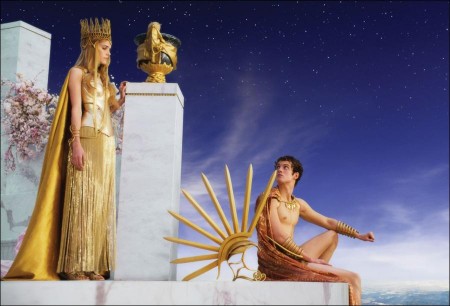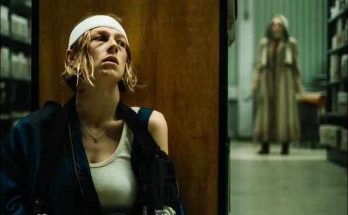Bursting with Olympian deities, sweeping battles and breathtaking vistas, Immortals demanded a larger-than-life production style. From its inception, the film’s creators knew that to bring the dynamic story fully to life, it would have to be a 3D movie—and not just an ordinary 3D movie. “Tarsem has a rare kind of vision,” says Tucker Tooley of Relativity Media. “He looks at the world through a different lens and brings something to the story you would never anticipate. To realize that unique point of view, we designed the movie in 3-D from the beginning. We tailored everything about the film to maximize the stereo effects.”
However, shooting the film using conventional 2D cameras and creating the 3-D effects in postproduction gave the director more control of the depth and dynamic range than would have been possible shooting in 3-D. “Every element had to be considered,” says Tooley. “Before we shot a single frame, we designed our foreground and background elements in a way that optimized the dimensionalization process.”
Singh worked with senior stereographer David Stump of 3DCG to develop a detailed depth budget and depth script that helped ensure that the look of the picture conformed to the director’s vision. “You can see the difference immediately,” says the director. “We took the time and, most importantly, put in the planning to do it properly. Some people are calling this a game-changer.”
The movie’s groundbreaking look was executed by Prime Focus, the 3D effects house that had previously dimensionalized such blockbusters as Star Wars: Episode One – The Phantom Menace and Harry Potter and the Deathly Hallows: Part 2. Recent advances in technology, including Prime Focus’ proprietary View-D software, allowed Singh the flexibility to create visuals unlike any that have been seen before.
With 4,000 artists and technicians spread across three continents, Prime Focus dedicated significant resources to realizing Singh’s ambitious vision. “The great challenge in every movie is really adapting an entire team of artists to meet the needs of that director,” says Prime Focus marketing executive Bobby Jaffee. “What George Lucas or Michael Bay want for their movies has nothing to do with what Tarsem Singh wants.”
“Tarsem’s input was the basis for everything we did,” Stump says. “He asked us to give the characters a sense of volume and form. The key word was sculpture. We wanted the characters to look like they were really right there in front of you as opposed to on a screen.”
For Singh, the technology proved an organic extension of the unique visual style he has developed over an award-winning career as a commercial and feature film director. “The story could have been told in many different ways,” he says. “But my aesthetic really lends itself to 3-D. My shots tend toward tableaux and I normally shoot longer masters, both of which are very effective in 3-D. I don’t do a lot of fast cutting or extreme close ups, which don’t work well in this format. So in the end, I didn’t have to adapt my vision for 3-D; it was a perfect fit.”
The dimensionalization process can be slow and arduous, Stump acknowledges, but it brings big payoffs in the final product. “It took months and months of work. But creating stereoscopic 3D content in postproduction gave us more control. We could place anything anywhere we wanted. In fact, we not only could, we had to, because nothing lands in the right place accidentally.”
As Singh anticipated, 3-D ultimately suited his inspired visuals perfectly. “It was a quite a benchmark we had to reach,” says Merzin Tavaria, co-founder and chief creative director of Prime Focus. “The detailing of the sequences, particularly the Titan sequences, was an exciting challenge. In the end, we were very happy with the product and that we were able help Tarsem achieve his vision.
“At every interval we would send shots to him and confer on how he would like to shape it in 3-D,” Tavaria explains. “We worked with the depth of each image, foreground to background, and how it could be positioned in 3D. That enabled us to push quality to an extremely high level.”
The finished film has depth and volume never before seen on screen, according to Ken Halsband, executive in charge of production for Relativity Media. “What’s new and unique about this particular picture is that we succeeded in creating an artistic looking 3-D movie,” says Halsband. “Everything from sets to costumes was designed for the ultimate 3-D experience. We used the technology better this time, more painstakingly and artistically than it has been used before.”
Luminous and encompassing, Immortals raises the bar for stereoscopic effects in film. “Tarsem has created an entirely new world,” says Tooley. “With an environment that the audience hasn’t seen, the more you integrate them into the experience, the better it is. The 3-D technology gave us an amazing opportunity to do that.”
Related Link: Read the Full Production Notes for Immortals
Visits: 96




